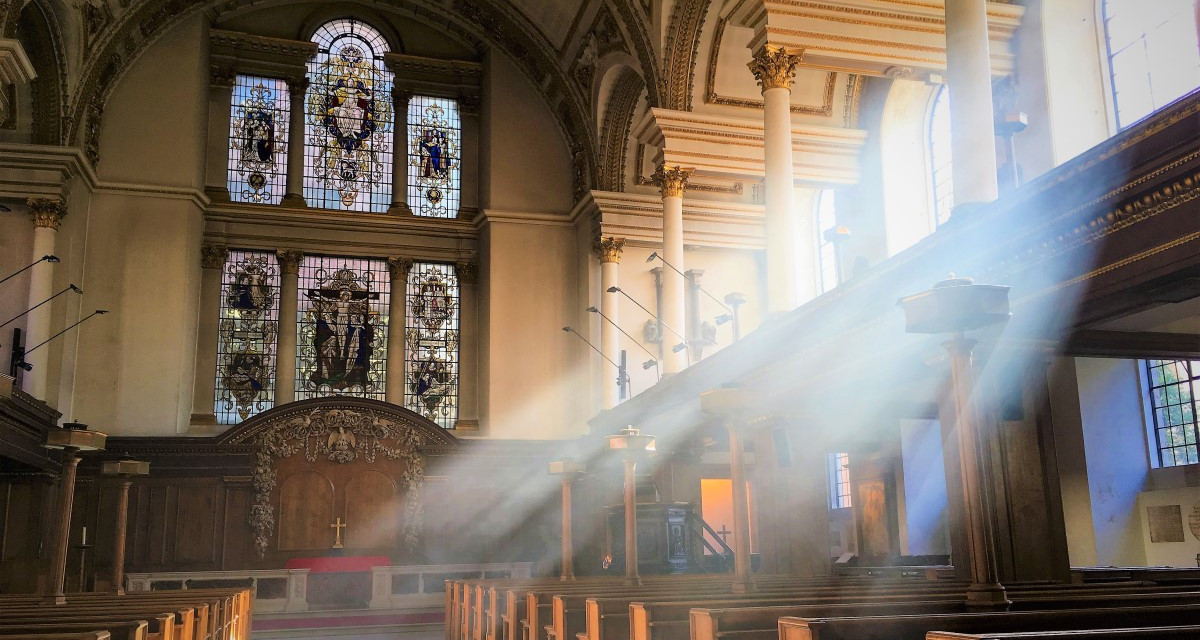St James’s Church is on the brink of a hugely ambitious renovation that will cement the Grade-I-listed building’s position at the heart of the community for generations to come
Words: Jonathan Whiley
Here’s a starter for 10; what do Adele, King Charles II and William Blake have in common? Why St James’s Church of course. In 1684 the monarch commissioned Sir Christopher Wren to build this Piccadilly landmark which has seen Handel play the organ, Blake baptised and Adele and R.E.M perform in the early years of their respective careers.
Now, in the 300th anniversary year of Wren’s burial, the next chapter is set to be written in its illustrious history with the unveiling of a £20 million pound project to restore, renovate and rejuvenate the entire site.
President of The Wren Project, The Earl of Snowdon – Queen Elizabeth II’s nephew – says this “home for visionaries” (where Sir Isaac Newton worshipped) is a “Wren jewel.” “It's one of London's most innovative and active community centres and the goal is to renew the site to serve the community now and in the future.”
Homelessness is one example. Every Monday, volunteers at the church serve a sit-down meal in front of the altar to those who are going through homelessness; accounting for 6,000 meals a month.
Lucy Winkett, rector of St James's Piccadilly since 2010, believes that heritage and homelessness are “umbilically linked”.
“We are helping people that are going through homelessness, but we are doing that partly by indicating to them that they are worth us spending a lot of money restoring a Christopher Wren church.
“I want to make that building more beautiful so that a homeless person has somewhere better. The two are not separate; often in society the more beautiful you make a place, the more exclusive it becomes. I want to go in exactly the opposite direction.”
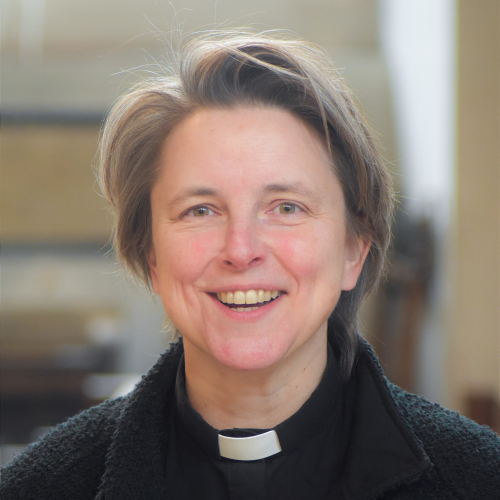
It’s an ambitious and in many ways ground-breaking project that Lucy says has been “at least eight years in the making, if not nine or 10.” “It’s the most beautiful site and it’s also complex, which is what makes it interesting.”
Planning permission was granted recently and lasts for three years, but the exact timeline and nature of how it will operate remains a complicated business. “For example, if we started mid 2024 – which is possible – then the church itself would be out of action for eight months and the whole site would, in different places, be shut for two years,” says Lucy.
They are committed to finding their congregation an alternative place to worship and continuing their various other projects, including feeding the homeless and finding a place to hold concerts in the name of St James’s. “We have got existing, brilliant relationships with musicians, so we’re not going to shut up shop.”
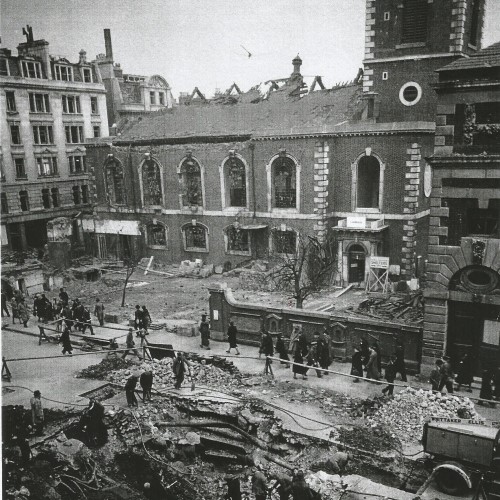
The architect for the project is Ptolemy Dean, who specialises in historic preservation and is the Surveyor of the Fabric of Westminster Abbey. While the project has been in discussion and planning for the last decade, it can be traced back to the Second World War. The site was bombed during The Blitz with the rectory raised to the ground. “Two people died in the basement here,” says Lucy, referring to the rectory.
“The north side of the church was quite badly damaged and part of the roof was damaged. Quite a lot of the church remained, but a bomb fell on this building. After the war, it took the then rector 14 years to get the money together to be able to rebuild it. It reopened in 1954 and in 1968, the spire was put on.
“It’s now in urgent need of repairs and out of that urgency came a sense that some of the building decisions made in 1954 were completely fine at the time, but that is not where we are now. We took our cue from the urgency of repairs to the church and spire particularly, to take a look at the whole site here.”
The plan is to make everything much more open and accessible in every sense. “If you walk along the south side – on Jermyn Street in particular – we look shut. So we are building a new archway from Jermyn Street to Piccadilly, a new public route, and restoring a door in the church itself which Christopher Wren designed, but the Victorians blocked up.
“We are also going to release the pews from being concreted in, so we can be more flexible so you could have a concert in the round for example. Obviously services are our main thing and that will remain and we won’t compromise on that, but we do want to have as many different events as we can and releasing the seating will help.”
As well as opening up to the south (with step-free access), the site will open to the east. A building which currently links the rectory to the church will be taken down altogether, allowing people to walk through from Church Place into the courtyard. “It’s quietly transformational. We’re opening a bit here and a bit there, but it will transform the way people move around the place.”
A wooden and lead spire will replace the current fibreglass one (erected as part of the post-war restoration work) and a new floor at the top of the rectory (a centre for social impact projects and support facilities) will be created with the capacity for around 100 people.”
“There will be an open balcony and it will have fantastic views down Piccadilly.”
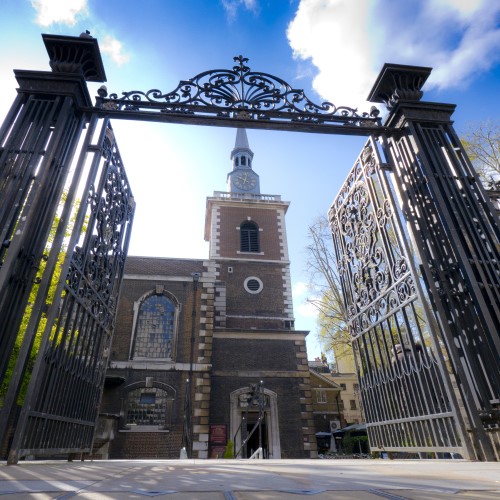
The small Southwood Garden will be replanted too, along with a new pavilion. “We have got two principles that we have founded the scheme on; beauty and justice. They are philosophically linked; if you give people a beautiful experience they are more likely to act more justly in the world.” Lucy says one of the biggest decisions centred around the rectory. “The obvious thing to do is to take it down, but we decided not to do that for environmental reasons. We wanted to adapt and reuse and upcycle, so we are adapting it and we have some really interesting design features with a new floor on the top and a new roof which matches the [Edwin] Lutyens roof opposite us; the building which is now Maison Assouline.”
The project will be “environmentally outstanding” for historic buildings. “We have got an air source heat pump going in the church tower – I think we are the first historic church to be doing that and it will transform the heating of the whole site.
“The Church of England nationally has quite stringent and challenging targets about net carbon zero, but we want to try and beat it. This church has been pioneering for decades [it has 49 solar panels on the roof – the first Grade I-listed church to do so] and we want to continue that.”
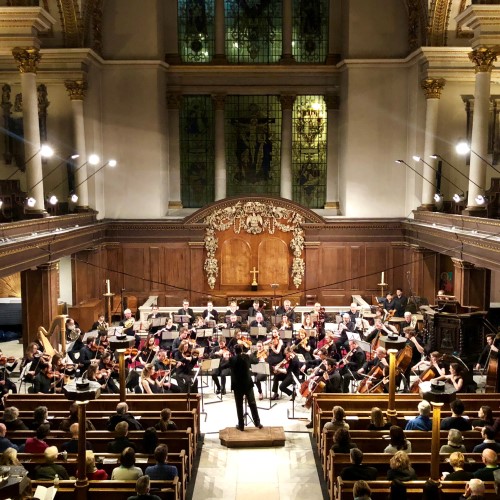
Lucy may be enthusiastic, but she’s not unrealistic about the challenges. Staying true to the vision is key – “it’s very tempting to put stuff in the ‘too difficult’ pile, but the church should focus on that pile” – while the funds involved is a practical challenge.
“We have to raise £20 million, which is a big amount of money. I hope I’m not too naïve about this, but I feel that if our purpose and intent is clear then some people will want to be part of it and if they do, that is wonderful.”
The significance of St James’s Piccadilly should not be understated; its footprint was used as a blueprint for many churches throughout the United States in the 17th and 18th centuries and the historic figures who have ties here is remarkable.
This year is the 250th anniversary of the baptism of Ottobah Cugoano. Trafficked from Ghana to the Caribbean, he was sold to an English family that lived in Pall Mall and then freed. Baptised at the church aged 15 in order that he was not be enslaved again, he went on to write an influential book criticising slavery which is still in print today. “The only date and place you can locate him in his whole life was being baptised here in 1773, so we want to write his name into our walls by commissioning a plaque,” says Lucy.
“Those stories, you can’t separate them. You can’t just restore a building and build a religious museum. The stories of the people are inextricably intertwined with the architecture.”

